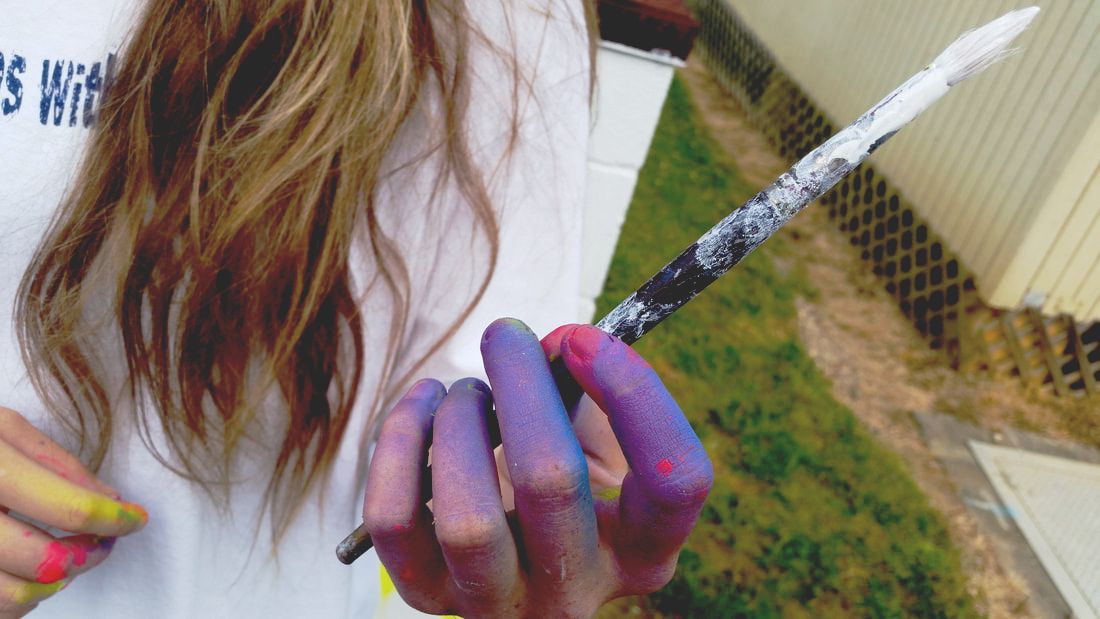|
There is an argument in art ed that goes something like this: to teach creative thinking we have to give students problems to solve. We, the teachers, spend quite a bit of time devising problems for our students. Examples: - Fill this pre cut shape with different types of lines. - Design and draw a themed color wheel. - Repeat an object, with overlapping, to fill the picture plane. - Make an artwork using only recycled objects. The problems we pose have a range; some are so narrow in scope that little room is left for interpretation, other are big and wide open with space for individuality. I have mixed feelings about these sorts of tasks. My primary issue is that they make a big assumption - that kids need that sort of hand holding to make art. Children are born creators. In preschool, in kindergarten, everything is a toy to be explored and creativity is unbridled. When we catch children at this age they need no limitations from us, just a safe space to make and help with understanding new processes and procedures. Any need for limitation is for the ones we miss, the ones who learn that making art is about following a teacher's plan. Limitations can have a role in helping them unlearn the bad habit of needing an assignment, of needing decisions made for them, until they can make their own plans again. BUT The limitation, no matter how interesting or open-ended it may be, is not the end goal. That has to be for our kids not to need us to make art. Anyone who tells you otherwise is missing the point.
3 Comments
Me in the past: This is charcoal. Here are some things you can do with it. (students try the things) Now make art with charcoal. This was the essence of a charcoal Bootcamp. The idea was to have to have a short period of teacher-directed learning that would, in theory, give students the information they needed to explore and create on their own. But I've been thinking - how does teacher-directed instruction support independence, inquiry and experimentation? Does it elicit deep understanding of media and divergent thinking? What if, instead, I said: Here are a few types of charcoal, here is paper. How are the types of charcoal different? How are they similar? What happens if you add these colored chalk pastels to the charcoal? (students work in groups to figure it out, record answers, then share findings with the group) Later: Here is some huge paper. Make a drawing, using what you've learned, that incorporates symmetry. What questions will you need to find answers to before you start? This is all hypothetical now, but I'm excited to see how it impacts student learning in my classroom this fall. I'm planning student-directed investigations for all media that will replace my Bootcamps. I'm calling them Explorations.
From the beginning, my students will explore and find their own answers. They will have support from me in at the start, especially in the form of guiding questions, but over time the responsibility for developing questions will shift from me to students. I think this will change everything, |
Mrs. PurteeI'm interested in creating a student student centered space for my high school students through choice and abundant opportunity for self expression. I'm also a writer for SchoolArts co-author of The Open Art Room. Archives
December 2019
Categories
All
|


 RSS Feed
RSS Feed